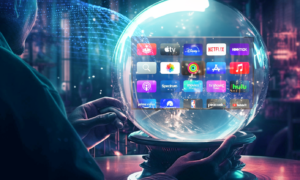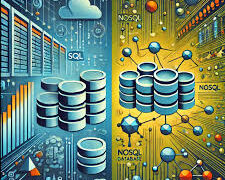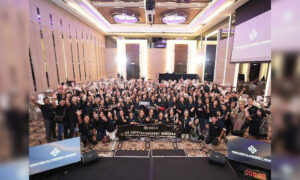Animation cartoons have woven their way into the fabric of our entertainment landscape, captivating audiences of all ages with their vibrant characters, fantastical worlds, and compelling narratives. From the golden age of hand-drawn animation to the cutting-edge technology of CGI, these animated wonders continue to evolve and leave an indelible mark on popular culture. In this exploration of the enchanting realm of animation cartoons, we’ll delve into the history, impact, and enduring appeal of this mesmerizing form of storytelling.
The Villainess’s Unexpected Journey – Spoiler Alert:
In the vast landscape of animation cartoons, one recurring theme that has garnered attention is the portrayal of female characters, particularly the villainess archetype. As we navigate through the diverse narratives crafted by animators, a captivating deviation from the norm comes to light: the villainess doesn’t need a new husband spoiler alert. This departure from the expected storyline serves as a refreshing reminder that animation cartoons are not just a source of entertainment but also a powerful medium for challenging societal norms. The inclusion of such unconventional character arcs contributes to the diversification of storytelling, breaking away from the predictable and allowing for more nuanced, thought-provoking narratives.
The Evolution of Animation Cartoons:
The journey of animation cartoons dates back to the early 20th century, with pioneers like Walt Disney and Max Fleischer laying the foundation for a medium that would revolutionize entertainment. The initial reliance on hand-drawn animation techniques gave rise to iconic characters such as Mickey Mouse and Betty Boop, forever etching their places in the annals of animation history. As technology advanced, the transition to computer-generated imagery (CGI) opened up new possibilities, ushering in a new era of animated storytelling.
This unexpected twist in the narrative, where the villainess’s storyline isn’t dictated by the pursuit of a new husband, adds depth to the evolution of animation. It challenges the conventional expectations placed on female characters and opens up avenues for more diverse and empowering storytelling. As animation continues to evolve, this deviation becomes a poignant symbol of the medium’s ability to reflect and influence societal perceptions.
The Impact of Animation Cartoons on Popular Culture:
As animation cartoons continue to evolve, their impact on popular culture becomes increasingly evident. The influence extends beyond the confines of the screen, permeating fashion, merchandise, theme parks, and even shaping societal conversations. Characters like Elsa from “Frozen” or the minions from “Despicable Me” have become cultural phenomena, with their images adorning everything from backpacks to birthday cakes.
Moreover, the ability of animation cartoons to address complex themes and social issues in an accessible manner has contributed to their enduring relevance. Productions like “Zootopia” tackle topics of prejudice and discrimination, using anthropomorphic characters to create a metaphorical reflection of the real world. This ability to convey profound messages through seemingly simple stories is a testament to the power and versatility of animation as a storytelling medium.
The Technological Marvels Behind Animation:
The evolution of animation goes hand in hand with technological advancements. From the hand-drawn animations of yesteryears to the sophisticated CGI of today, each era brings forth new possibilities and challenges for animators. The advent of 3D animation has not only revolutionized the visual aspect of cartoons but has also expanded the scope of storytelling, allowing for more immersive and visually stunning experiences.
Motion capture technology, virtual reality, and augmented reality have further pushed the boundaries of what is possible in animation. These innovations not only enhance the creative process for animators but also provide audiences with increasingly realistic and engaging experiences. As technology continues to advance, we can only anticipate more groundbreaking developments in the world of animation.
The Global Appeal of Animation Cartoons:
One remarkable aspect of animation cartoons is their ability to transcend cultural boundaries. Whether it’s the adventures of Studio Ghibli’s magical characters or the universally relatable themes in Pixar films, animation has become a global language that resonates with people from diverse backgrounds. The colorful visuals, universal themes, and imaginative worlds created by animators have the power to unite audiences worldwide.
This global resonance is further amplified by the inclusion of narratives where the villainess’s journey doesn’t revolve around finding a new husband. It reflects a universal aspiration for diverse and empowering stories that resonate with audiences across cultures. As animation continues to break barriers, it serves as a bridge connecting people through shared experiences and the celebration of creative storytelling.
The Artistry of Animation:
Beyond the technological marvels, animation is fundamentally an art form. The painstaking process of creating each frame, the attention to detail in character design, and the artistry involved in bringing imaginary worlds to life showcase the incredible talent of animators. From the whimsical landscapes of “Alice in Wonderland” to the meticulously crafted scenes in “Spider-Man: Into the Spider-Verse,” animation is a canvas where creativity knows no bounds.
The collaboration between animators, voice actors, musicians, and storytellers results in a harmonious symphony of elements that elevates the entire viewing experience. The dedication to craft and the pursuit of artistic excellence are evident in every frame, making animation a medium that not only entertains but also inspires.
Conclusion
Animation cartoons have come a long way from their humble beginnings, evolving into a sophisticated and influential medium that captures the imagination of audiences worldwide. From the enchanting worlds they create to the profound messages they convey, animation cartoons continue to shape and reflect our culture in remarkable ways. As technology advances and storytelling evolves, we can only anticipate that the magic behind the screens will continue to captivate and inspire generations to come. So, the next time you find yourself immersed in the vibrant colors and captivating stories of an animation cartoon, take a moment to appreciate the artistry, innovation, and sheer magic that make these animated wonders a timeless and cherished part of our cultural landscape.



































